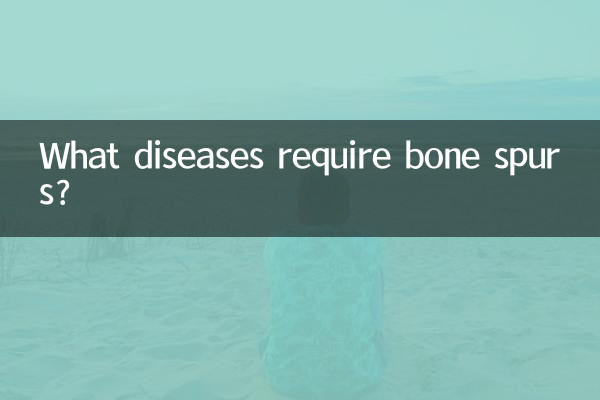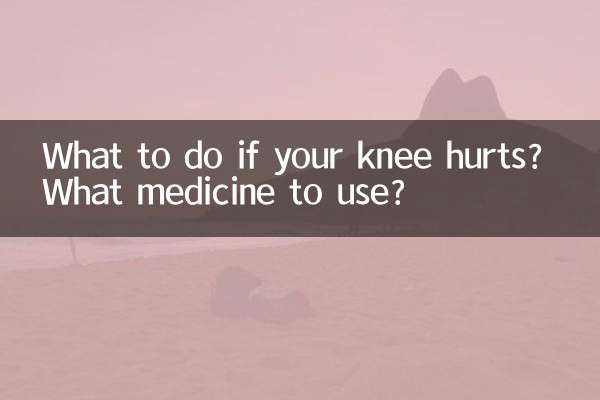What diseases require bone spurs?
Bone spurs, also known as bone hyperplasia, are bony protrusions formed on the edges of bones, commonly found around joints. It is usually the body's compensatory response to joint degeneration or injury. So, what diseases or conditions require bone spur treatment? This article will give you a detailed explanation based on the hot topics and hot content on the Internet in the past 10 days.
1. Common diseases requiring bone spur treatment

Bone spurs are more common in middle-aged and elderly people, especially those who have been engaged in physical labor for a long time or have heavy joint loads. The following table lists common diseases that require bone spur treatment and their symptoms:
| Disease name | Common symptoms | Predisposed areas |
|---|---|---|
| osteoarthritis | Joint pain, stiffness, limited movement | Knee, hip, spine |
| cervical spondylosis | Neck pain, dizziness, numbness of upper limbs | cervical vertebra |
| Lumbar disc herniation | Low back pain, radiating pain in lower limbs | lumbar spine |
| Calcaneal spur | Heel pain, especially when you wake up in the morning | calcaneus |
| frozen shoulder | Shoulder pain and limited movement | shoulder joint |
2. Treatment methods for bone spurs
There are various treatment methods for bone spurs, and the choice needs to be based on the specific situation of the patient. The following are common treatments:
| Treatment | Applicable situations | Curative effect |
|---|---|---|
| Conservative treatment | Early stage, mild symptoms | Relieve symptoms and slow progression |
| drug treatment | The pain is obvious | short term relief of symptoms |
| physical therapy | Chronic phase | Improve local blood circulation |
| surgical treatment | Severe compression of nerves or blood vessels | Complete relief from oppression |
| Traditional Chinese Medicine and Acupuncture | various stages | Relieve pain and improve function |
3. How to prevent bone spurs
The key to preventing bone spurs is to reduce overuse and damage to your joints. Here are some effective preventive measures:
1.Control your weight:Reduce the load on joints, especially knees and hips.
2.Moderate exercise:Choose sports with low impact on joints, such as swimming and cycling.
3.Correct posture:Avoid staying in the same posture for a long time, especially lowering your head to play with mobile phones, sitting for long periods of time, etc.
4.Eat properly:Supplement calcium and vitamin D to enhance bone health.
5.Timely treatment:Seek medical attention promptly when joint pain occurs to avoid worsening of the condition.
4. Recent hot topics
Based on the hot topics on the Internet in the past 10 days, the hot topics about bone spurs mainly focus on the following aspects:
1.Minimally invasive treatment for bone spurs:With the development of medical technology, minimally invasive treatment of bone spurs has become a new hot spot, with less trauma and faster recovery.
2.Increased bone spurs in young people:The incidence of bone spurs in young people is increasing due to poor living habits and prolonged sedentary life.
3.The relationship between bone spurs and osteoporosis:Studies have found that bone spurs and osteoporosis may coexist and require comprehensive treatment.
4.Chinese medicine treatment of bone spurs:The application of traditional Chinese medicine methods such as acupuncture and massage in the treatment of bone spurs has received widespread attention.
5. Conclusion
Bone spurs are a common bone disease, mostly related to joint degeneration. Understanding which diseases require bone spur treatment can help with early detection and intervention. Through reasonable treatment and preventive measures, symptoms can be effectively relieved and quality of life improved. If you have relevant symptoms, it is recommended to seek medical treatment in time to avoid delaying the condition.

check the details

check the details